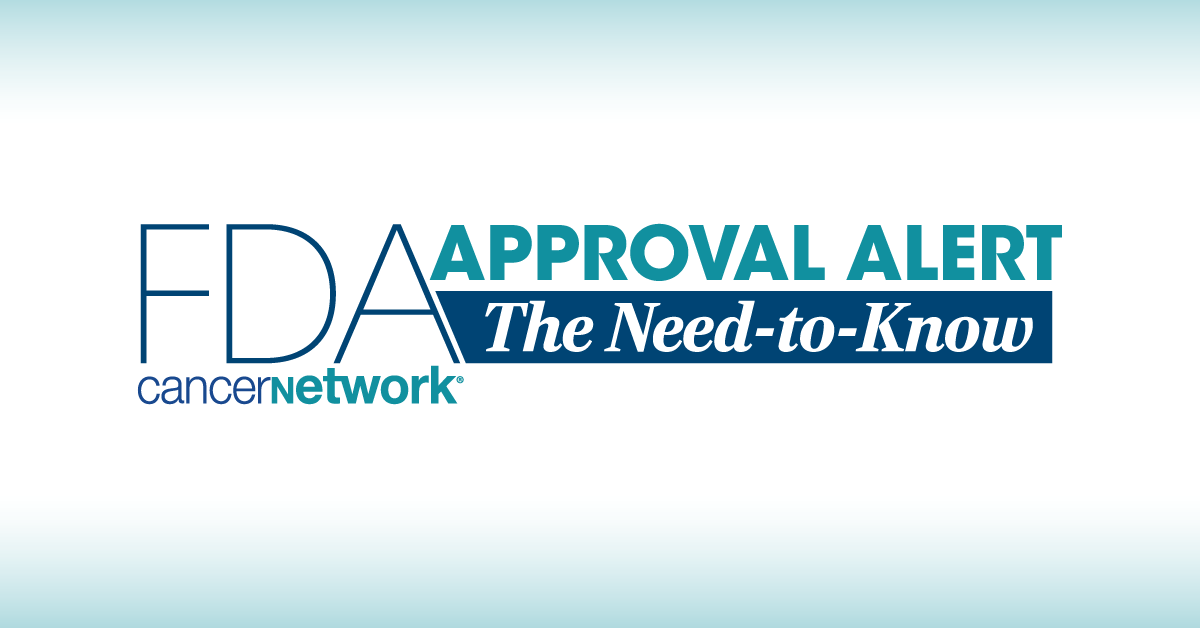Linvoseltamab Earns FDA Accelerated Approval for R/R Multiple Myeloma
Data supporting the FDA decision came from the phase 1/2 LINKER-MM1 trial.
The recommended dose for intravenously administered linvoseltamab includes step-up doses at 5 mg, 25 mg, and 200 mg, followed by 200 mg weekly for 10 doses, and 200 mg biweekly thereafter.

The FDA has granted linvoseltamab-gcpt (Lynozyfic) accelerated approval as treatment for adult patients with relapsed/refractory multiple myeloma who have received at least 4 prior lines of therapy, including a proteasome inhibitor, an immunomodulatory agent, and an anti-CD38 monoclonal antibody, according to a news release from the agency.1
Data supporting the FDA decision came from the phase 1/2 LINKER-MM1 (NCT03761108) trial. Efficacy findings revealed that the objective response rate (ORR) by blinded independent review committee (BICR) among 80 patients with relapsed/refractory multiple myeloma previously treated with at least 3 prior lines of therapy was 70% (95% CI, 59%-80%). After a median follow-up of 11.3 months among responders to treatment, the estimated 9- and 12-month duration of response (DOR) rates were 89% (95% CI, 77%-95%) and 72% (95% CI, 54%-84%) respectively.
Any-grade cytokine release syndrome (CRS) occurred in 46% of patients. Neurologic toxicities, including immune effector cell-associated neurotoxicity syndrome (ICANS), occurred at a frequency of 54%. The prescribing information includes a boxed warning for life-threatening CRS and neurologic toxicities, with linvoseltamab only available through a restricted program under a Risk Evaluation and Mitigation Strategy (REMS), called the Lynozyfic REMS.
The recommended dose for intravenously administered linvoseltamab includes step-up doses at 5 mg, 25 mg, and 200 mg, followed by 200 mg weekly for 10 doses, and 200 mg biweekly thereafter. Patients who have achieved and maintained a very good partial response or better at or after week 24 and received a minimum of seventeen 200 mg doses, the dosing frequency is decreased to 200 mg every 4 weeks.
In August 2024, the FDA gave linvoseltamab a complete response letter (CRL) in relapsed/refractory multiple myeloma after an issue was indicated from a third-party manufacturing site.2 A biologics license application (BLA) resubmission was accepted for linvoseltamab by the FDA in the same indication in February 2025.3
In an interview with CancerNetwork® regrading the CRL, Surbhi Sidana, MD, associate professor and hematologist in the Department of Medicine, Division of Blood and Marrow Transplantation and Cellular Therapy at Stanford University School of Medicine, said, "In the big picture, CRLs are usually certain deficiencies that are noted by the FDA. In this case, it was at a manufacturing plant that was a third-party facility. Overall, the linvoseltamab program– yes, they have to address this. Yes, this might delay things for a certain period for FDA approval. In the big picture, I don’t think this impacts how I look at the data that is publicly available, the approval chances long-term for linvoseltamab, and how we might use it in the future. This is my read on the data that is publicly available."
References
- FDA grants accelerated approval to linvoseltamab-gcpt for relapsed or refractory multiple myeloma. News release. FDA. July 2, 2025. Accessed July 2, 2025. https://tinyurl.com/5b9eb3kj
- Regeneron provides update on biologics license application for linvoseltamab. News release. Regeneron Pharmaceuticals, Inc. August 20, 2024. Accessed July 2, 2025. https://tinyurl.com/2u2pvw82
- Linvoseltamab BLA accepted for FDA review for the treatment of relapsed/refractory multiple myeloma. News release. Regeneron Pharmaceuticals. February 11, 2025. Accessed July 2, 2025. https://tinyurl.com/y7hjbdub
Navigating AE Management for Cellular Therapy Across Hematologic Cancers
A panel of clinical pharmacists discussed strategies for mitigating toxicities across different multiple myeloma, lymphoma, and leukemia populations.